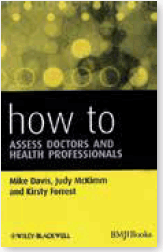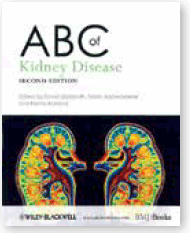How to assess doctors and health professionals
Mike Davis, Judy McKimm, Kirsty Forrest
United Kingdom: Wiley Blackwell, 2013
ISBN 978 1444 330 564, $47.95
 The ‘How to…’ series of books are concise guides that are accessible to the novice in any field. They focus on the non-clinical areas that can become part of our professional lives, such as education and research. The emphasis of this book is the medical field, with examples from the undergraduate university level to qualified doctors.
The ‘How to…’ series of books are concise guides that are accessible to the novice in any field. They focus on the non-clinical areas that can become part of our professional lives, such as education and research. The emphasis of this book is the medical field, with examples from the undergraduate university level to qualified doctors.
There are opening chapters on the purpose and principles of assessment. These will be particularly useful to people starting out in the field. They may also offer a decoder to the terms that the reader may have heard but may not have been clear about, such as validity, reliability, norm referencing, formative assessment, and so on. There is also a chapter on feedback, but focused in the realm of discussions around assessments. At the end of these chapters, readers will feel they have the foundations to understand more.
The authors of this book are from the United Kingdom, which at times, is apparent. The chapter on revalidation has a United Kingdom focus, acknowledging that it is still not a fully known phenomenon, and discusses the challenges and some potential responses. Topical issues such as e-assessment and portfolios, including assessing reflection, are also considered.
Different forms of assessment, from multiple choice questions to multisource feedback and in between are discussed, including the practicalities, strengths and weaknesses of each. Another chapter considers programmatic assessment, with examples at the macro level (such a university medical degree) and a smaller scale level, such as for a day long course.
One of the messages I think this book clearly articulates is that there is no ‘silver bullet’ for assessment. At the end of reading this book, the reader will not be surprised that the question ‘What is the purpose of this assessment?’ is highlighted by the authors in the conclusion as being a fundamental and timeless question.
This book may be of interest to people starting out in assessment as part of a role, or to general practitioners who have students or registrars in their practice and want a book that can give them an insight into the mysteries of assessment.
Dr Carolyn O’Shea
Melbourne, Vic
ABC of kidney disease, 2nd edition
David Goldsmith, Satish Jayawardene and Penny Ackland, editors
United Kingdom: Wiley Blackwell, 2013
ISBN 978 0470 672 044, $52.95
 The ABC of Kidney Disease broadly covers all aspects of renal health from prevention, screening, investigating, common conditions and management issues to chronic kidney disease, end stage renal disease, including palliation, plus chapters dedicated to paediatrics and anaemia.
The ABC of Kidney Disease broadly covers all aspects of renal health from prevention, screening, investigating, common conditions and management issues to chronic kidney disease, end stage renal disease, including palliation, plus chapters dedicated to paediatrics and anaemia.
The presentation of this is effective, with easy-to-read diagrams and tables. However, the book does seem to be a little disorganised, and suffers in its aim to provide information for all, from medical student to resident registrars, general practitioners and all those involved in the care of people with renal disease.
There is a reasonable amount of repetition, which presumably is required for a book that may not be read from cover-to-cover. It answered many of those questions that have dogged me over the years. However, their emphasis doesn’t reflect the pattern of renal disease in Australia, with our huge burden of disease in Aboriginal and Torres Strait Islander peoples. For example, I was disappointed that post-streptococcal glomerulonephritis had the briefest of mentions. Although this book does address the psychosocial aspects of renal disease, and the necessity for a team approach in the care of patients with renal disease, there was only a fleeting mention of culture.
On perusing the index I was aghast to see ‘investigations’ as the first chapter. This took me back to a North American article I had read some 20 years ago that described in detail all the investigations required and then suggested that ‘you may wish to examine the patient’.
In summary, The ABC of Kidney Disease is easy-to-read, well presented, and the tables and diagrams are, for the most part, relevant to Australia, although some are relevant only to the United Kingdom. It offers a fairly comprehensive yet concise review of renal disease that GPs require in a time poor situation. A little disorganised for my liking, but useful references are provided for those requiring more information. It certainly won’t suffice as your only source of information on renal disease, but the ABC of Kidney Disease provides a useful start.
Dr Charles Ellis
Mount Isa, Qld